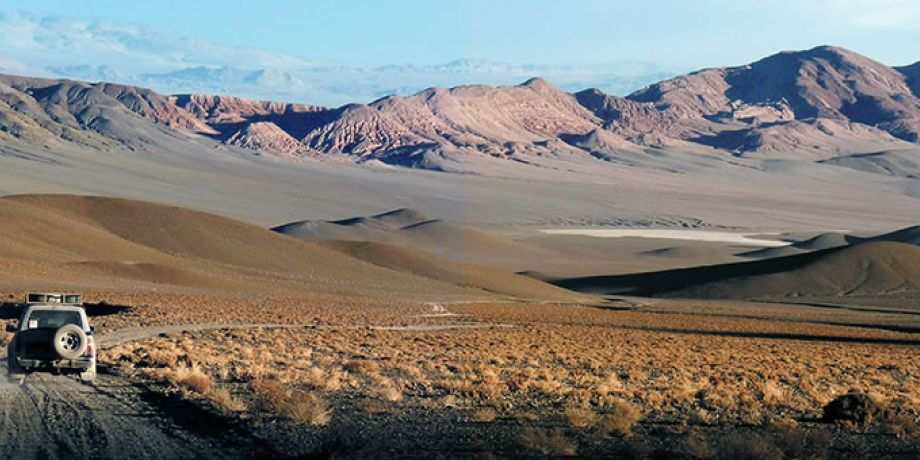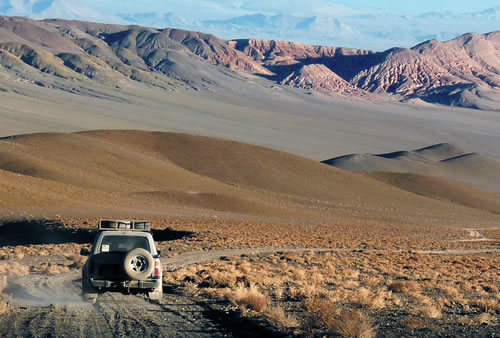
Glad to be Back!
After a happy six year break back in Australia as editor of The Far East magazine and working in Columban promotion in Adelaide, I have returned to Santiago, Chile, where I had previously worked for many years. While naturally missing friends and family back in Australia, it is good to be back as a Columban missionary in Chile.
Luckily I arrived back in Santiago on September 13, 2017, a few days after the blackouts, barricades of burning tires, broken glass, tear gas and protests that each year mark the anniversary of the military coup of September 11, 1973.
One of the changes I notice in Chile is the large number of immigrants arriving here from countries such as Peru, Venezuela, Haiti, Colombia, Argentina, Ecuador and the Dominican Republic. It is said 200 Haitians arrive each day in Chile. As the Chilean population continues to age and have smaller families, immigrants are needed to provide labor for economic growth.
This is the new Chile. Now Haitians as well as Chileans earn a meager living selling chocolate bars, ice cream and soft drinks to motorists stopped at traffi c lights, as well as cleaning their windshields. Fruit and vegetable markets now have large numbers of Peruvians and Colombians offering tropical fruits and vegetables previously unavailable. Many of these immigrant communities bring a strong Catholic faith with them and are helping to revitalize local parishes.
I arrived just in time for the September 18 Chilean independence day celebrations. Chileans celebrate their independence from Spain in 1810 in a big way. At Sunday Masses parishioners wear their national costume and dance the Cueca, the national dance, and eat traditional foods.
Cities throughout the country organize Independence Day celebrations with lots of food and drink, music and dancing. One lady I was speaking with after Mass told me that she hates this time of year, because it brings back bad memories from her childhood of a drunken father and domestic violence.
In order to combat domestic violence, some of metropolitan Santiago's 37 municipal areas now promote family friendly folk festivals with a very limited and controlled consumption of alcohol. For three consecutive nights I went with friends to one of these folk festivals where several excellent bands and professional dance groups entertained thousands of people into the early hours of the morning.
Rodeos are traditionally held during the Independence Day celebrations. This year animal rights activities interrupted several rodeos alleging cruelty to animals. They also broke into the laboratories of the University of Chile and set free all of the rats and mice used there for experiments.
I have been appointed to work in the parish of San Columbano which is located a little more than twelve miles from Santiago center in the southern suburbs of Santiago. Many Columbans have worked in this parish since the 1960s when it was part of a larger parish. The current parish priest is a Korean Columban Diocesan Associate, Fr. Pablo Park. There is also a permanent deacon and a community of religious sisters in the parish. Together we work in conjunction with all the lay women and men who for many years have faithfully served the parish community.
The parish is spread over a large, mostly poor, working class area. It has seven chapels that serve their local neighborhoods. Like other areas in the poorer parts of Santiago, there are many social problems such as unemployment, robberies, assaults, overcrowded housing, domestic violence, drug and alcohol abuse, poor health care, family breakdown and abandoned street dogs often with ticks, distemper and mange. All of these areas can be quite dangerous late at night.
Also late at night, fi recrackers are lit or shots fi red into the air by drug dealers to let their customers know that a fresh batch of illegal drugs has just arrived in the area. Sadly, one gets used to anything.
Walking the streets of the parish and Santiago in general, one often fi nds colorful street art and murals, often commemorating a young gang member killed in a shootout with rival gangs. Two powerful murals at present commemorate the 50th anniversary of the execution of communist guerilla fi ghters, Che Guevara, in Bolivia in 1967, and the suicide of Chile's famous folk singer and composer, Violeta Parra, also in 1967.
The presbytery where Fr. Park and I live is located on an ordinary street about a fi ve minute walk from the main parish church. In a small garden area at the back, I have planted tomatoes, lettuce, capsicums and other vegetables. I mention this because it is very important for us missionary priests to fi nd ways to relax and unwind, such as working in the garden.
Every year on the third Sunday in October, around 80,000 young people walk almost seventeen miles through the foothills of the Andes Mountains to the Carmelite Sanctuary where the Chilean saint, St. Teresa of the Andes, is buried. This year, around 200 pilgrims filling six buses left St. Columbanos parish at 3:30 a.m. to participate in the pilgrimage. As temperatures that day were 93 degrees, it was good to start walking as early as possible.
In the garden area at the back of our presbytery is a small chapel. This is a very important place for me to spend time, to pray, refl ect and discern as I re-enter missionary life back in Chile. Here I see the Lord's strength and guidance on how we, as a parish community, can build up His Kingdom in our neighborhoods.
Columban Fr. Daniel Harding returned to Chile in 2017 and is working in the parish of San Columbano.
